LED Lights and Fixtures: Types, Benefits, and Installation Tips
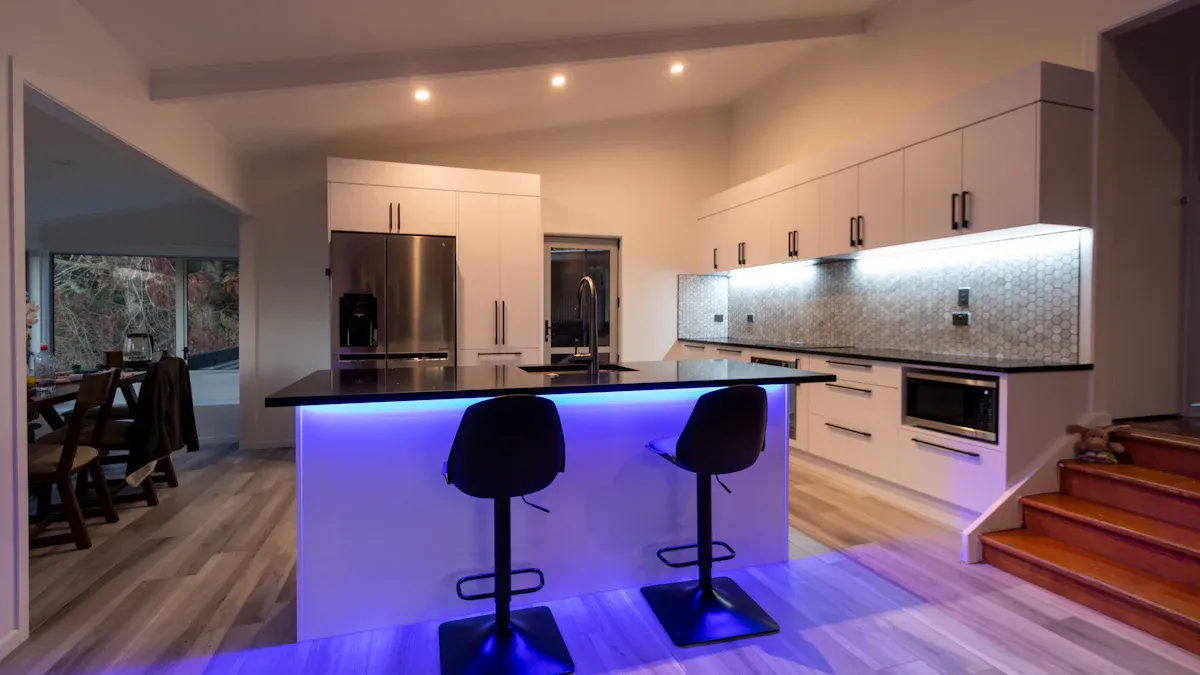
You can find LED lights and fixtures almost everywhere today, like in homes, offices, and stores. LED lighting uses new technology to make bright and efficient lights for many places. Many people pick LED lights because they save energy, last a long time, and are very safe. These lights also let you choose different designs and help you pay less for energy. When you use LED lighting, you get the good things that modern lights give. If you want to know more about us or see our product, check out how a LED light can change your space.
Key Takeaways
LED lights save a lot of energy and lower your electricity bills by using up to 75% less power than old bulbs.
LED bulbs last much longer, often over 25,000 hours, so you replace them less and save money over time.
LED fixtures are safe, strong, and work well indoors and outdoors, helping keep spaces bright and secure.
You can choose many LED types and designs, like bulbs, strips, and floodlights, to fit your space and style.
Proper installation and choosing the right LED products ensure safety, good light quality, and long-lasting use.
What Are LED Lights?
LED Technology
LED lights are common in many places now. They use new technology to make light. LED means light emitting diodes. These are small devices with a special part called a semiconductor. When you turn on an LED, electricity goes through the semiconductor. This makes electrons and holes meet at the P-N junction. When they come together, they make energy as visible light. This is called electroluminescence. LED lights do not need filaments or gases like old bulbs. They use materials like aluminum-gallium-arsenide to make bright and efficient light.
LED bulbs work in a different way than incandescent or fluorescent bulbs. The table below shows how LED technology is different from older lighting:
Feature | LED Bulbs | Incandescent Bulbs | Fluorescent Bulbs |
|---|---|---|---|
Working Principle | Electrical current goes through a microchip and turns energy into visible light | Heats a filament until it glows | Electric current excites mercury vapor, making UV light that excites phosphor coating |
Energy Efficiency | Turns 80-90% of energy into light; uses about 10W for 800 lumens | Only about 2% of energy becomes light; wastes 98% as heat; uses 60W for 800 lumens | More efficient than incandescent but not as good as LED; uses about 13-18W for 800 lumens |
Lifespan | 25,000-50,000 hours (up to 23 years at 6 hours/day) | 1,000-1,500 hours (3-6 months at 4 hours/day) | 8,000-15,000 hours (varies) |
Environmental Impact | No toxic materials like mercury; can be recycled; low carbon footprint | Makes more heat; not energy efficient | Has mercury, which is toxic and needs careful disposal |
Light Quality | Turns on right away, has many color choices, and gives light in one direction | Warm light, turns on fast, but not as efficient | May flicker, takes time to warm up, spreads light wider |
Initial Cost | Costs more at first ($2-$20 per bulb) but saves money over time because it uses less energy and lasts longer | Costs less at first (~$2.70 per bulb) but costs more to use | Costs a medium amount, but you pay more for upkeep and replacements over time |
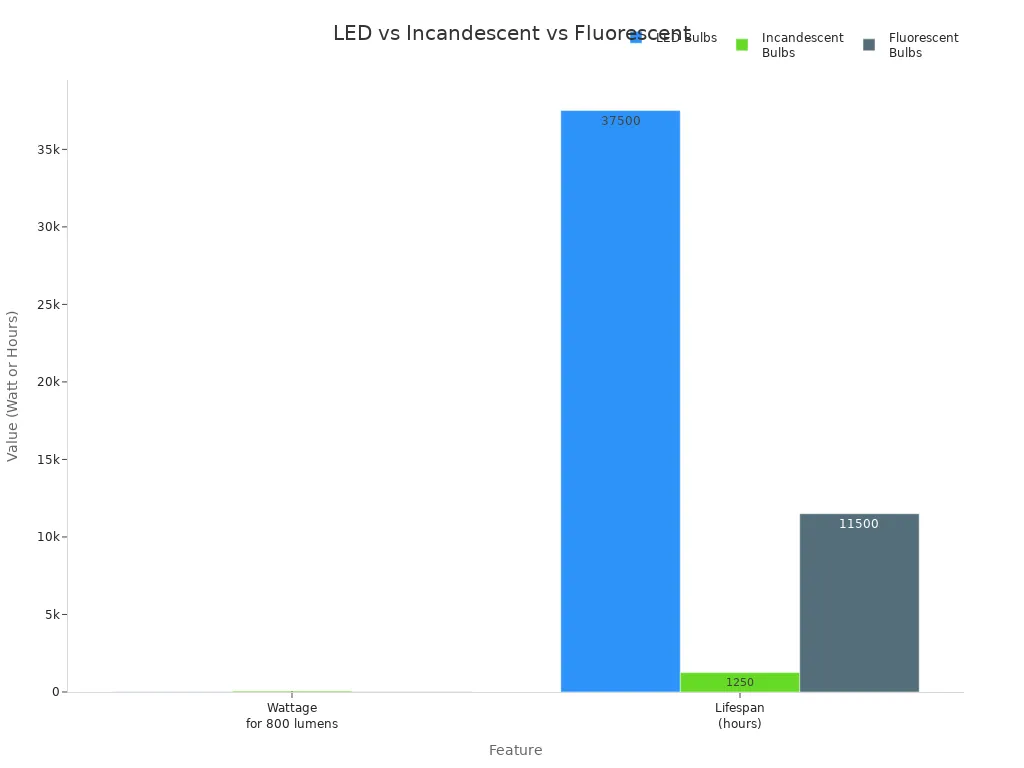
LED Lights and Fixtures Explained
There are many kinds of LED lights and fixtures for different uses. LED bulbs fit in most lamps and ceiling fixtures. Recessed and pendant LED fixtures give focused or stylish light. LED strip lights are good for accent lighting under cabinets or along stairs. LED floodlights help light up outdoor spaces or big areas.
LED fixtures are made to use each light well. You save more energy and the lights last longer. Many LED fixtures have dimmers, sensors, or smart controls. These let you change the light to fit your needs and save even more energy. You also get less glare and more comfort because the fixtures point the light where you want it.
Tip: Pick LED lights and fixtures with ENERGY STAR labels. These products are safe, efficient, and high quality.
LED lighting keeps getting better. Today’s LED lights use less energy, last longer, and cost less than before. You can find LED lights and fixtures for almost any place, like homes, offices, and outside.
Types of LED Lights and Fixtures
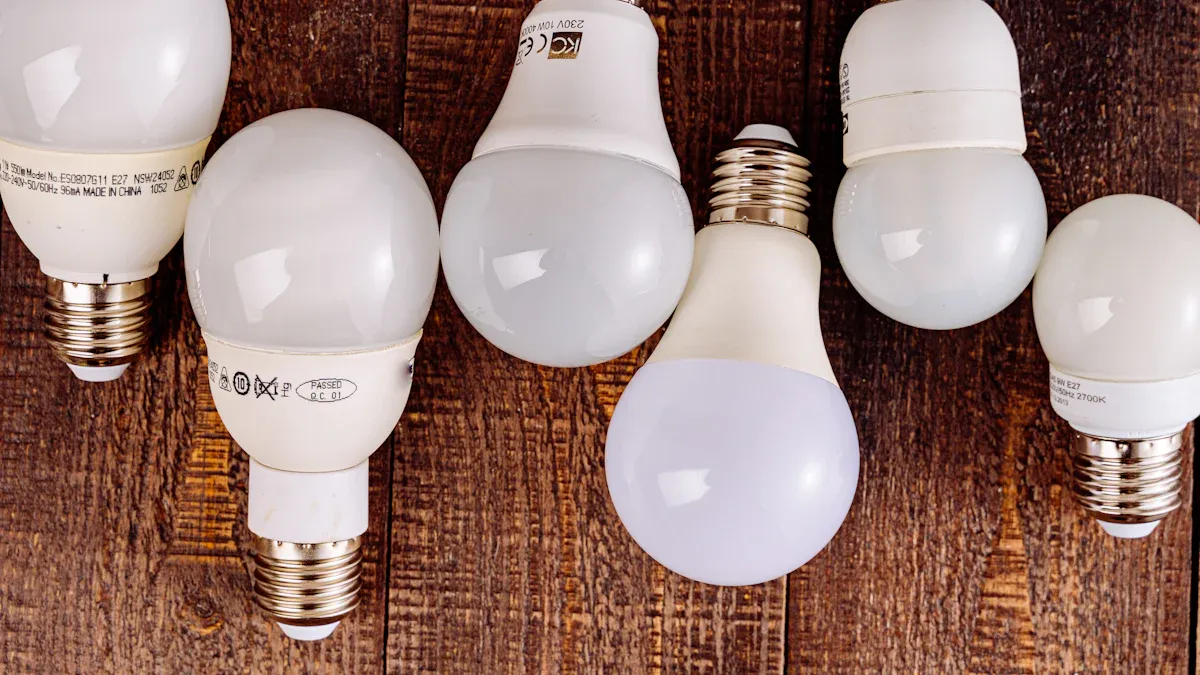
There are many kinds of led lights and fixtures. Each kind works best in certain places. Some are good for homes, others for businesses. You need to pick the right one for your space. Think about where you want to put the light and what you need it to do.
General LED Light Bulbs
General led light bulbs are very common. You see them at home and at work. They can take the place of old bulbs. These bulbs fit in most lamps and ceiling lights. They come in different shapes like A19, BR30, and PAR38. You can choose the shape that fits your lamp or fixture.
Here is a table that shows where you might use these bulbs:
Setting | Typical Applications of General LED Light Bulbs |
|---|---|
Residential | - Recessed downlights in kitchens, hallways, bathrooms |
- Under-cabinet lighting for countertops | |
- LED replacement bulbs for standard incandescent bulbs | |
Commercial | - Street lights, parking garage lighting |
- Walkway and outdoor area lighting | |
- Refrigerated case lighting | |
- Modular lighting and task lighting | |
- LED tubes replacing fluorescent tubes | |
- LED panels for suspended ceilings | |
- LED high bay lights for warehouses and gyms | |
- LED floodlights for parking lots, sports fields, and outdoor areas | |
- LED downlights for directional lighting |
Some smart led bulbs let you change the color and brightness. You can use your phone or voice to control them. These bulbs save energy and last longer than old bulbs.
Recessed and Pendant LED Lights
Recessed led lights go inside the ceiling. You only see the light, not the fixture. They make rooms look bigger and brighter. These lights give a clean and modern style. You can use them to show off art or furniture. They work well in kitchens, living rooms, and offices.
Pendant led lights hang down from the ceiling. You often see them over tables or work spaces. They give bright light for things like cooking or reading. Pendant lights add style and help you see better.
Note: Both recessed and pendant led lights save energy. You can change how bright they are and where they shine. This helps you set the mood in any room.
LED Strip Lights
Led strip lights are long and bendy. They have many small leds on them. You can cut them to fit almost anywhere. These lights are great for accents, under cabinets, or behind TVs. You can use them in bedrooms, living rooms, or outside.
Some ways to use led strip lights are:
Lighting up ceilings
Under kitchen cabinets
Around mirrors or beds
In stores or restaurants for mood lighting
Behind TVs or in gaming rooms
Outside for gardens or parties
Led strip lights have sticky backs. You can put them almost anywhere. They come in many colors, even RGB for cool effects. Some strips work with smart home systems. Led strip lights use little power and last a long time.
LED Floodlights
Led floodlights shine bright light over big areas. People use them outside for safety and sports. They light up parking lots, buildings, and fields. Led floodlights use less energy than old ones and last longer.
Here is a table that compares led floodlights to old floodlights:
Performance Characteristic | LED Floodlights | Traditional Floodlights (HID) | LED Sports Lights |
|---|---|---|---|
Beam Spread | Wide (70° to 130°), broad coverage, safety, and security lighting | Similar wide beam spreads, less efficient | Controlled beam spreads for even illumination |
Light Quality & Uniformity | Lower uniformity, some glare and shadows | Lower quality light, less uniform | High uniformity, meets sports lighting standards |
Lumen Output | Moderate, good for general outdoor lighting | Moderate, depends on lamp type | Higher lumen outputs for sports fields |
Efficiency | Improved over traditional HID lamps | Lower efficiency, more energy use | Most efficient for sports lighting |
Mounting & Beam Control | Adjustable mounting, wide beam | Fixed mounting, less control | Multiple fixtures for even coverage |
Application Suitability | Cost-effective for outdoor lighting, safety, and security | Used in many commercial outdoor floodlights | Designed for sports fields and venues |
You can point led floodlights where you need light. They work for homes and businesses.
Integrated vs. LED-Ready Fixtures
There are two main kinds of led fixtures. One is integrated led light fixtures. The other is led-ready fixtures. Each has its own good points.
Aspect | Integrated LED Fixtures | LED-Ready Fixtures |
|---|---|---|
Design | LED arrays built into fixture, no replaceable bulbs | Designed to use replaceable LED bulbs |
Color & Lumen Output | Fixed, designed for specific output | Bulb selection allows flexibility |
Lifespan | Often a decade or more | Depends on bulb lifespan |
Maintenance | Replace LED array/module when failed, more complex and costly | Replace bulbs easily and less costly |
Installation Effort | Comparable initial installation | Comparable initial installation |
Upgrade Flexibility | May require fixture replacement to upgrade technology | Easier to upgrade by changing bulbs |
Integrated led light fixtures have leds built in. You cannot change the bulb. They look slim and work well. They last many years and need little care. If the led stops working, you may need a new fixture.
Led-ready fixtures let you use led bulbs you can change. You can pick the bulb you want. It is easy to fix or upgrade. Both types work in homes and businesses.
Tip: Pick integrated led light fixtures for a modern look. Choose led-ready fixtures if you want easy upgrades.
Other Types of LED Lights and Fixtures
There are many other led fixtures for special jobs. Here are some examples:
UFO high bay lights: Round lights for big spaces
Linear high bay lights: Long lights for large rooms
Drop ceiling lights: Soft light for offices and halls
Suspended led lights: Hanging lights for stores
Vapor proof lights: Sealed lights for wet places
Recessed troffer lights: Hidden lights for offices
Task lights: Lights you can move for close work
Led track lighting fixtures: Adjustable lights for displays
Indoor led panels: Thin lights for big offices
You can use these fixtures in homes or big buildings. Each type gives a different look and does a special job.
Remember: The right led lights and fixtures help you save energy. They make spaces safer and look better too.
LED Lighting Benefits
LED lighting has many good points for homes and businesses. You get better lights, save money, and have more ways to design your space. Using LED fixtures helps the earth and makes things safer. Here are the main reasons to use LED and integrated LED light fixtures.
Energy Efficiency
Switching to LED lighting saves a lot of energy. LED bulbs use much less power than incandescent or fluorescent lights. A study from the University of Michigan says using LED instead of fluorescent lamps can save 18% to 44% energy. The U.S. Department of Energy says LED systems are about 25% more energy-efficient than fluorescents. If you change old bulbs to LED, your energy bills will go down. This makes LED lighting a smart way to save energy anywhere.
LED fixtures turn most electricity into light, not heat. This means you waste less energy. You also help the earth by using less power and making fewer greenhouse gases. Energy-efficient lighting like LED is good for the planet and your wallet.
Long Lifespan
LED bulbs last much longer than other lights. You do not need to change them often, so you save time and money. Look at the table below to see how long each bulb lasts:
Lighting Technology | Average Lifespan (hours) | Typical Cost (USD) |
|---|---|---|
Incandescent | ~1,000 | $0.40 - $1.00 |
Energy-efficient Incandescent | ~2,000 | N/A |
Halogen | 1,000 - 2,250 | $1.00 - $2.75 |
LED | 10,000 - 25,000 | $11 - $22 |
If you use an LED bulb for 4 hours a day, it can last about 17 years. Even if you use it for 12 hours a day, it will work for over 5 years. This long life means you buy fewer bulbs and make less trash. Integrated LED light fixtures also last many years, so they are a good choice for any place.
Durability and Safety
LED fixtures are strong and safe to use. You can put them in many places without worry. Here are some ways LED lighting helps with safety and strength:
LED lights give bright, steady light in homes, offices, and outside.
Commercial LED flood lights help keep parking lots and buildings safe by making it easier to see.
In your home, LED lighting makes things like cooking and grooming safer by cutting down on shadows and dark spots.
LED bulbs and integrated LED light fixtures last a long time, so you do not have to change them often. This keeps your lights working and lowers the chance of accidents.
Many LED fixtures have motion sensors or smart controls. These turn lights on when needed, which helps stop falls or unwanted guests.
Outdoor LED lighting makes your yard or business safer at night.
LED lighting does not get as hot as other bulbs. This lowers the risk of burns or fires. You can trust LED fixtures to be safe and work well anywhere.
Environmental Impact
LED lighting is good for the planet in many ways. You help the earth when you pick LED fixtures for your home or business.
LED bulbs use up to 80% less energy than old incandescent bulbs. This means fewer greenhouse gases and a smaller carbon footprint.
The long life of LED bulbs means you throw away fewer bulbs, so there is less trash.
LEDs do not have bad stuff like mercury, so they are safer to get rid of.
Many LED fixtures use materials that can be recycled and are made in eco-friendly ways. This helps the planet and makes recycling easier.
By using LED lighting, you help the earth. You also save energy and help make the world cleaner.
Design Flexibility
LED lighting gives you lots of ways to design your space. You can use LED fixtures almost anywhere, like homes, offices, or stores. Here are some ways LED and integrated LED light fixtures help you get the look you want:
LED lighting comes in many colors and can be dimmed. You can set the mood or show off special things.
LEDs are small and strong, so you can use them in creative ways. You can put LED strips under cabinets, use panels in ceilings, or add spotlights for art.
You can layer lighting by mixing ambient, task, and accent lights. This makes rooms look and work better.
Smart controls let you change the lighting for different needs or times of day.
Accent lighting with LEDs helps you show off important parts of your space.
LED fixtures come in many shapes, like bulbs, strips, and panels. You can use them for general lighting or special uses. The small size of integrated LED light fixtures lets you try new designs and effects. New technology, like OLEDs, will give even more choices for flexible lighting soon.
Tip: Use integrated LED light fixtures to make modern, stylish spaces. You will use less energy and have more control.
Cost-Effectiveness
LED lighting saves you money over time. Even though LED bulbs and integrated LED light fixtures cost more at first, you spend less later. Look at the chart below to see how LED compares to other bulbs over 25,000 hours:
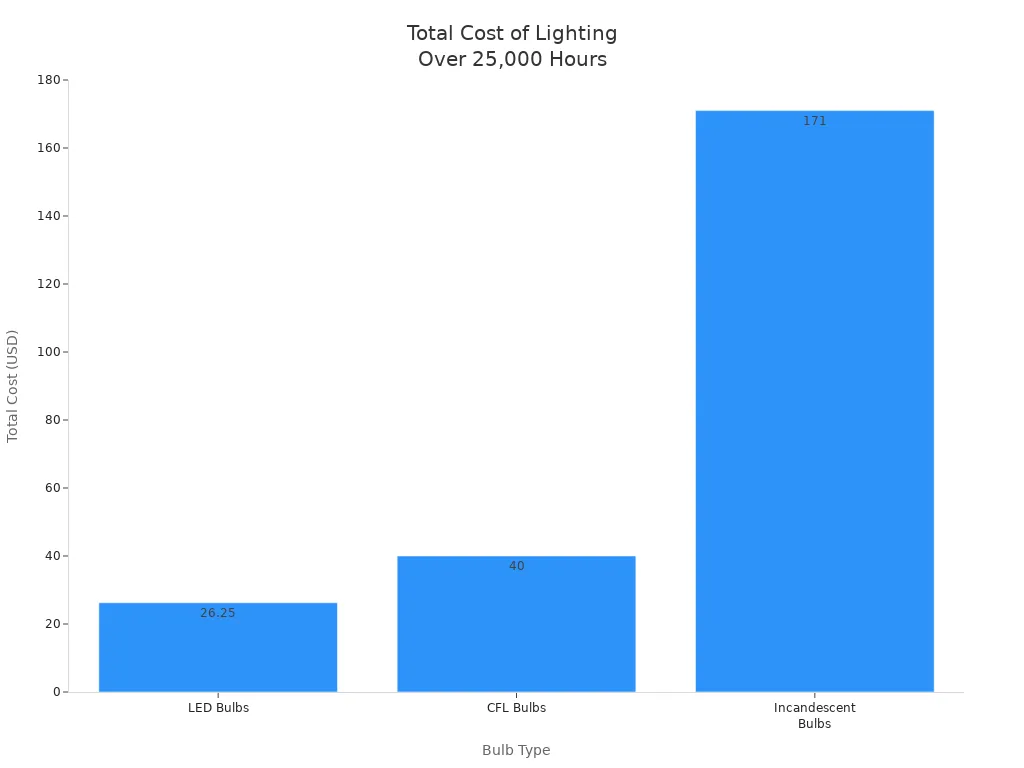
Feature | LED Bulbs | CFL Bulbs | Incandescent Bulbs |
|---|---|---|---|
Lifespan (hours) | 25,000 | 10,000 | 1,200 |
Wattage (equivalent to 60W) | 8.5 watts | 14 watts | 60 watts |
Cost per bulb | $5 | $2 | $1 |
Electricity used over 25,000 hrs (kWh) | 212.5 kWh | 350 kWh | 1500 kWh |
Electricity cost (@ $0.10/kWh) | $21.25 | $35 | $150 |
Number of bulbs needed | 1 | 2.5 | 21 |
Bulb replacement cost (25,000 hrs) | $5 | $5 | $21 |
Total cost over 25,000 hours | $26.25 | $40 | $171 |
You can see that LED bulbs and fixtures cost less over time. You buy fewer bulbs and pay less for power. LED lighting also works better, lasts longer, and has fewer problems. This makes LED the best choice for saving energy and money in the long run.
Installation Tips for LED Lights
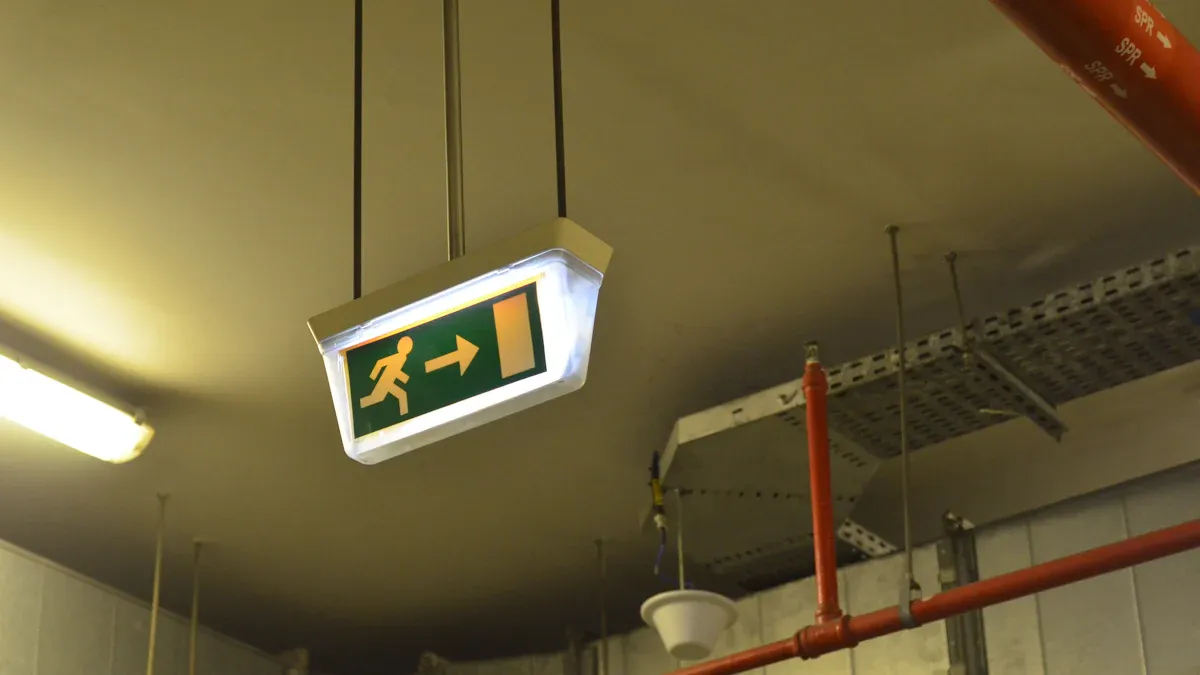
Choosing the Right LED
When you start your led installation, you need to pick the right product for your space. Look for these important factors:
Brightness: Check the lumens, not just the wattage. Lumens tell you how much light you get.
Color Temperature: Choose warm light (2700K-3000K) for bedrooms or living rooms. Pick cool light (3500K-5000K) for kitchens or work areas.
Color Accuracy: For most rooms, a CRI of 80 or higher works well. For art or makeup areas, look for a CRI above 90.
Dimming: If you want to dim your led lights, make sure they are marked as dimmable and work with your dimmer switch.
Safety: Look for safety marks like UL or ETL and a good warranty.
Tip: Always match the led fixture to the purpose—ambient, task, accent, or decorative lighting.
Brightness and Color Temperature
The right brightness and color temperature help set the mood and function of your room. Use this table to guide your choices:
Room | Color Temperature (Kelvin) | |
|---|---|---|
Living Room | 1500-2000 | 2700K-3000K (warm) |
Bedroom | 1000-1500 | 2700K-3000K (warm) |
Kitchen | 2700-4000 | 3500K-5000K (cool) |
Office | 500-1600 | 4000K-6500K (cool) |
Warm light feels cozy and helps you relax. Cool light makes it easier to focus and see details.
Wiring and Compatibility
Proper wiring is key for safe and long-lasting led installation. Common problems include loose connections, wrong wire size, and using the wrong driver. These issues can cause flickering, buzzing, or even damage your led lights. Always use the right wire gauge and check that your led lights match your dimmer or controller. Mixing different types of lights in one system can also cause problems.
Safety Tips
Before you begin any led installation, turn off the power at the breaker. Remove old fixtures carefully. Make sure all wires are tight and covered. Test your new led lights before finishing the installation. Look for certifications like UL, ETL, or Energy Star to make sure your led lights are safe and reliable.
Note: Never overpower your led bulbs or use them in fixtures not rated for their wattage.
DIY vs. Professional
You can handle simple led installations, like changing bulbs or plugging in strip lights. For complex jobs, such as wiring in wet areas or commercial spaces, hire a licensed electrician. Professionals know how to handle voltage drops, code rules, and tricky wiring. If you feel unsure, it is always safer to call an expert.
You gain many benefits when you choose led lights and fixtures for your space:
Led lights use about 75% less energy than old bulbs, which lowers your bills and helps the planet.
Led bulbs last over 25,000 hours, so you replace them less often.
Led fixtures are strong and work well in homes, stores, and outdoors.
You find led options in many shapes, colors, and smart features.
Led lighting saves money and supports a cleaner environment.
Think about your needs and always follow safety steps when you install led lighting. Upgrading to led makes your life easier and brings long-term value to your home or business.
FAQ
What does "lumens" mean on LED packaging?
Lumens measure how bright a light is. More lumens mean a brighter light. You should look at lumens instead of watts when you choose LED bulbs. This helps you pick the right brightness for your room.
Can you use LED bulbs in any fixture?
You can use LED bulbs in most fixtures. Make sure the bulb fits and matches the fixture’s wattage rating. For enclosed fixtures, pick LEDs marked as “enclosed rated” to avoid overheating.
Do LED lights work with dimmer switches?
Some LED lights work with dimmer switches. You need to choose bulbs labeled “dimmable.” Use a compatible LED dimmer switch for best results. If you use the wrong dimmer, the lights may flicker or not dim properly.
Are LED lights safe for the environment?
LED lights are safe for the environment. They use less energy and last longer than old bulbs. LEDs do not have mercury or other toxic materials. You can recycle many LED bulbs when they stop working.
See Also
Different Types And Advantages Of LED Replacement Lighting
Best Practices For Installing Exterior LED Lighting Benefits
Tips For Installing Outdoor LED Lights In Various Areas

